Exploring Sechelt – beach walk, totems, and an old cemetery
In Sechelt the afternoon of Day 44 of the trip, June 8th, I had visited Bricker Cidery, then gone back to Porpoise Bay Provincial Park to get the dogs. We then went to downtown Sechelt to do some more exploring.
Our first stop was the walkway along Trail Bay. Even on this rather dreary day, there were lots of people and dogs.

Down by the gravel-loading wharf at the far side of Trail Bay, the tug Storm Wave appeared ready to leave with a loaded barge.

There are a few interpretive panels along the sea walk. The one entitled “The Union Steamship Era: Opening Up the Sunshine Coast” inclues this wonderful Union Steamship brochure cover from about 1926. Until 1951 there was no ferry-and-road system, everyone came by boat. In the 1920s that was a 3-hour trip on a Union Steamship Company boat, with the fare $1.50.
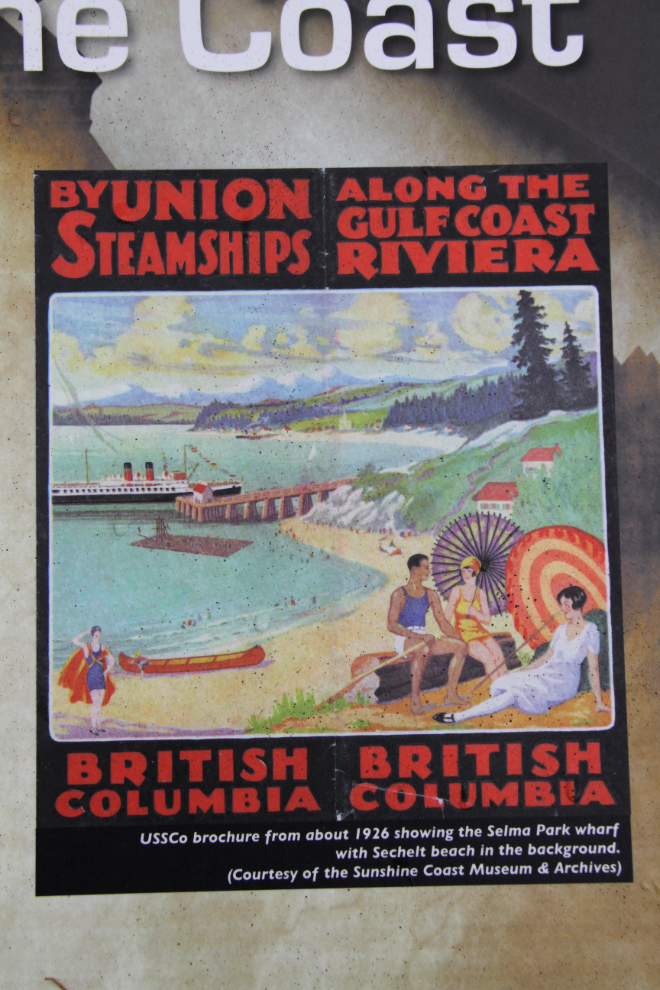
There’s a wide variety of homes along the Trail Bay waterfront, from historic and modern cottages to luxury condos.
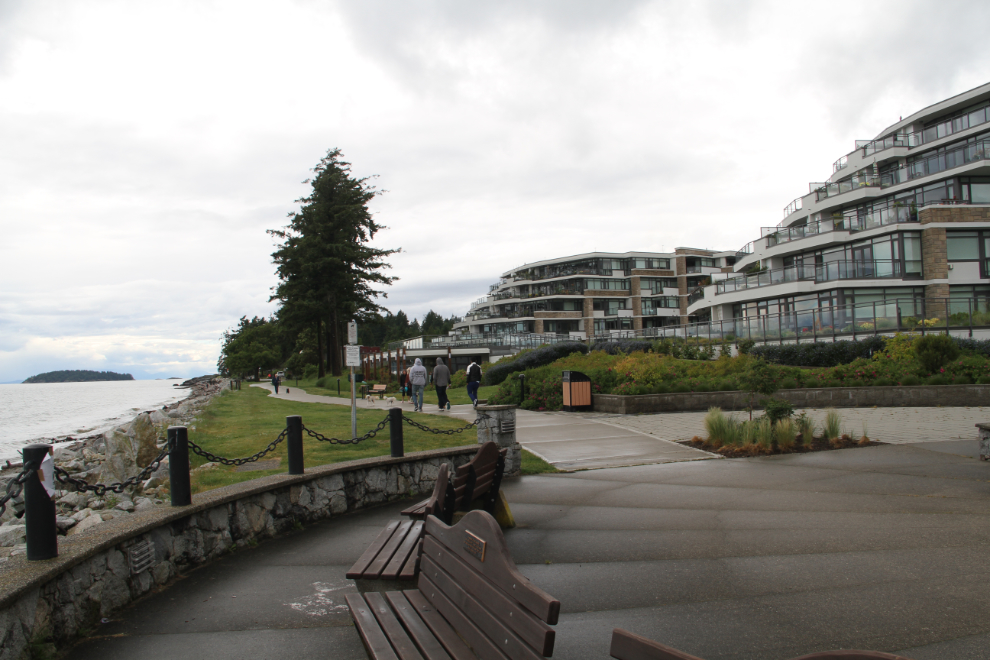
At the far end of the walk are 5 totem poles. Four of them represent the people from old villages of the shíute;;sh&aaclh (Sechelt) Nation, while the centre one represents the shíute;;sh&aaclh Nation as it exists today, an amalgamation of the four clans represented by the other poles. The poles, raised between 1986 and 2000, were carved by Tom Billy, Arnold Jones, Tony Paul, and Jamie Jeffries. There are many other significant totem poles in Sechelt – a descriptive brochure can be picked up at the Visitor Information Centre.
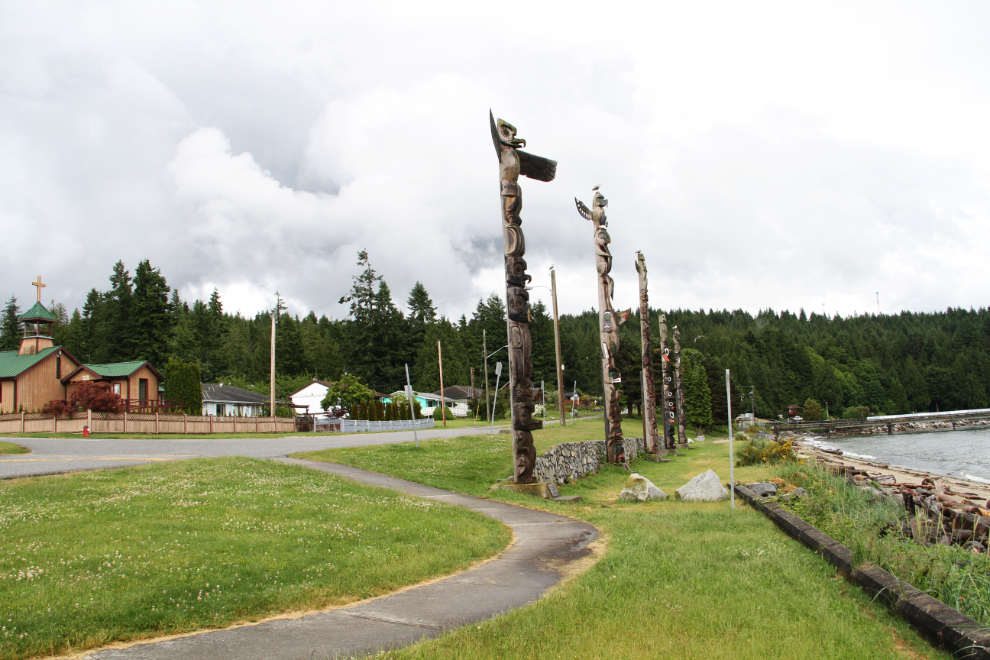
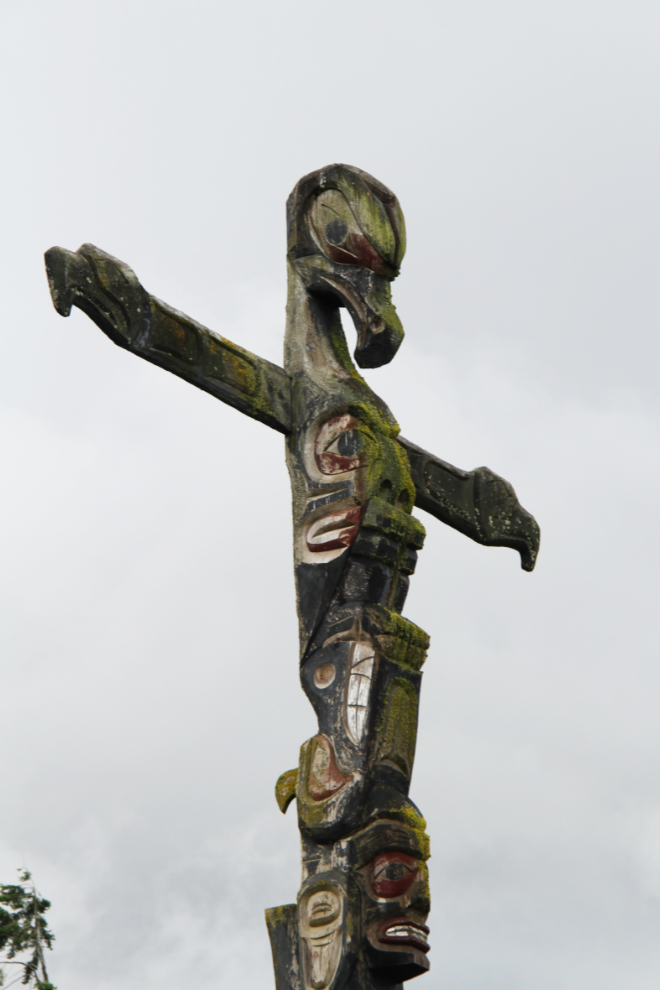

There are 3 carvings of this type along the seawall. I don’t know what the significance is.
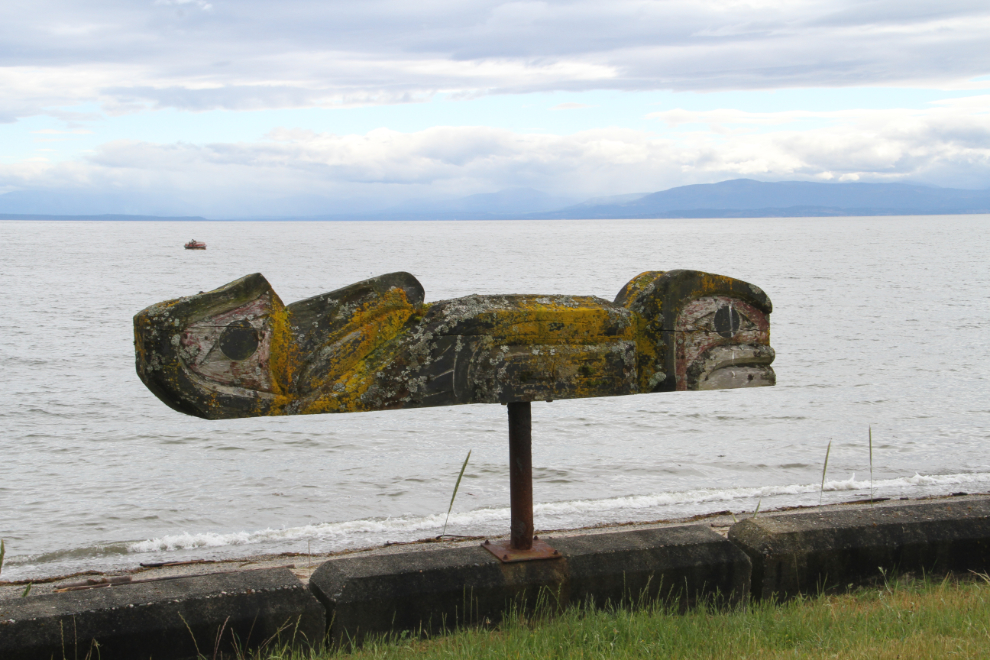
We walked out to the end of the pier. Out there is a large panel with photos of what you see now along shore, with historic photos identifying their locations. It’s a great way to give the historic photos context.
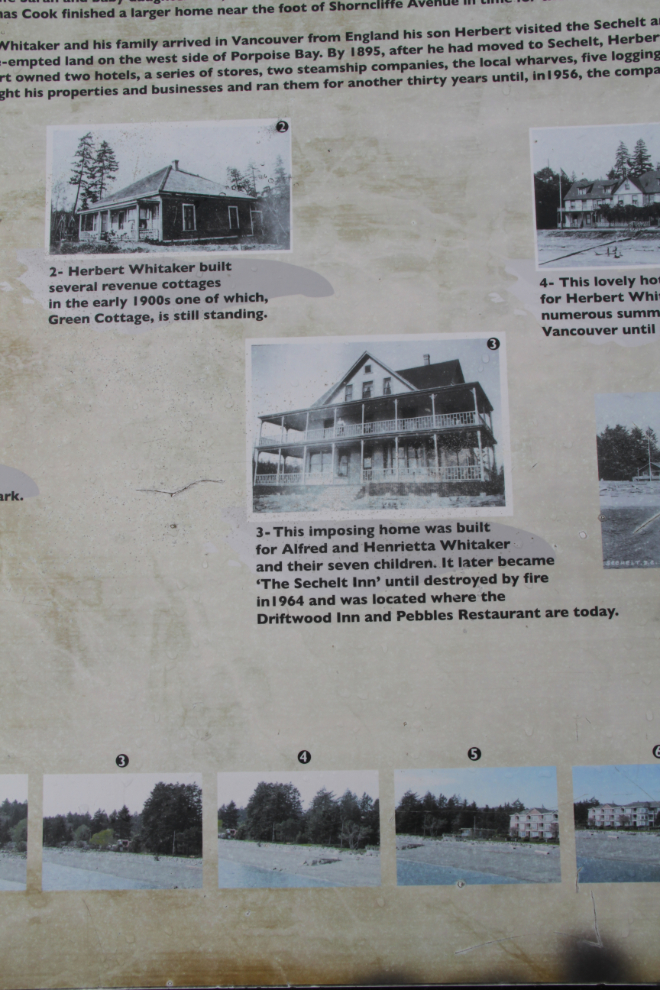
Sechelt’s oldest surviving building is “The Green Cottage”. One of Herbert Whitaker’s rental cottages, it was built in the Craftsman style in about 1909.
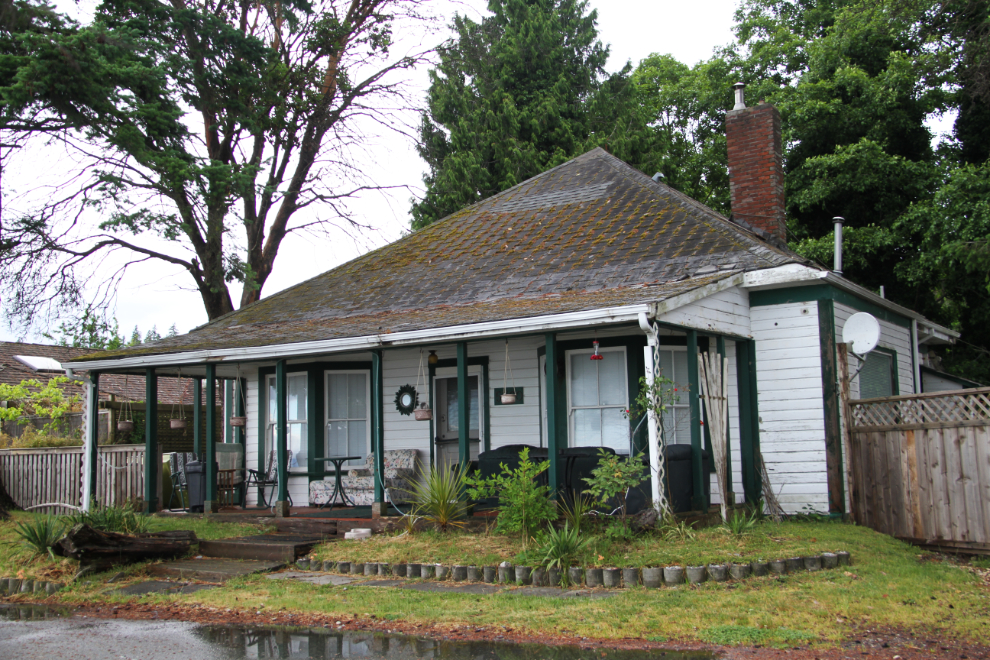
While looking for an historic church with a small cemetery, I came across Rockwood Lodge. More accurately, I came across a very impressive public garden, and found Rockwood Lodge hidden at the back of it. It was built as a boarding house by Bill and Jessie Youngson in 1935. The Arts and Crafts style building was acquired by the District of Sechelt in 1986, and now, restored back to its 1930s look, is a well-used meeting location. I expect that the gardens are used by photographers for portrait sessions.
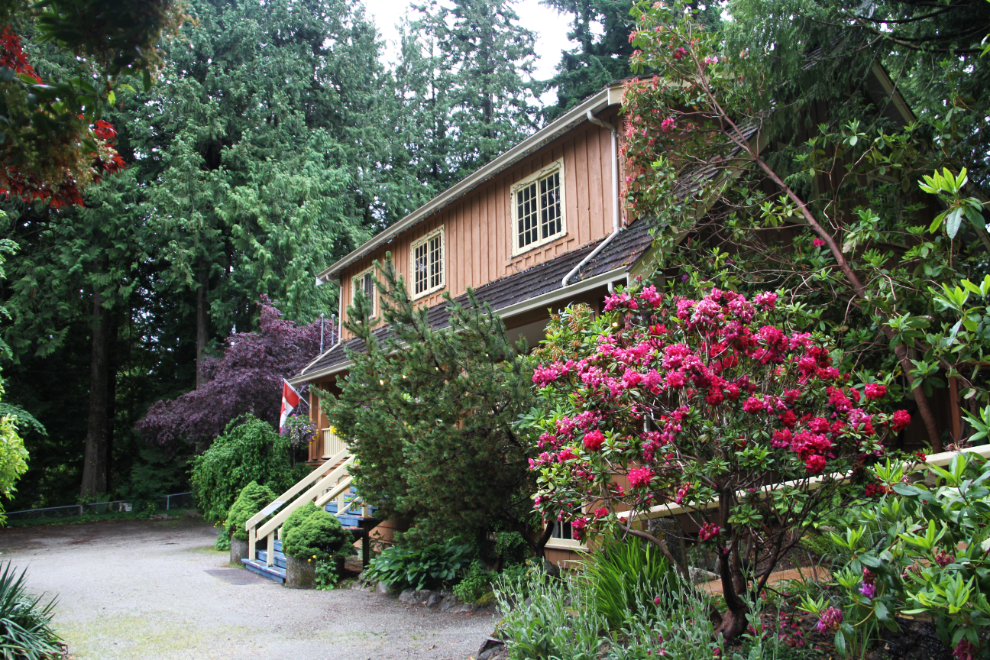
Right beside Rockwood Lodge is the rear entrance to the church grounds that I was looking for, those of St. Hilda’s Anglican church. I had driven by it on my search, but went by because the old building no longer exists.
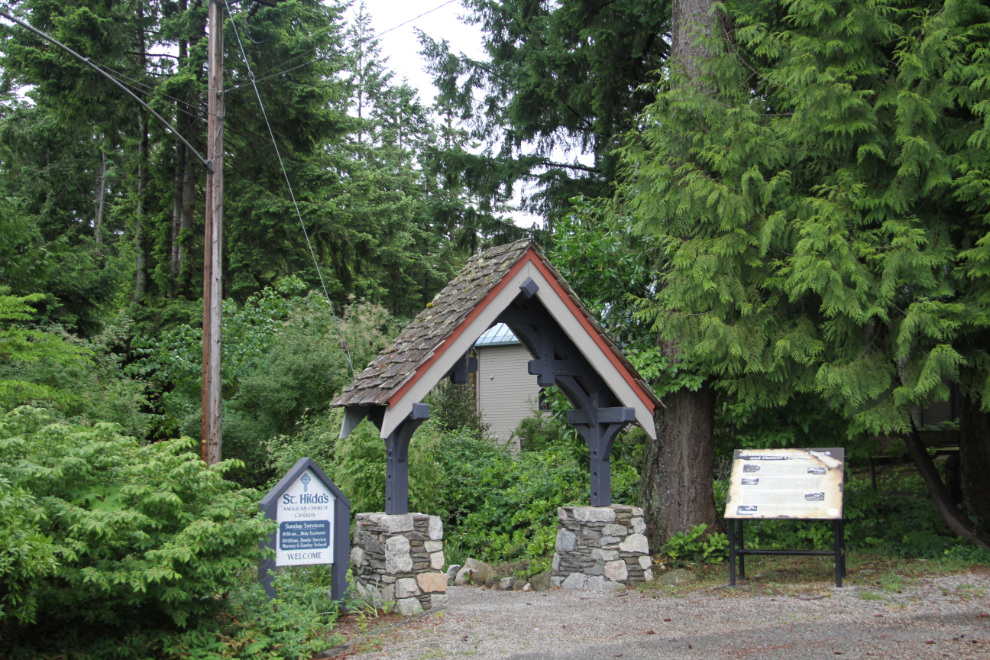
An interpretive panel shows the original church and cemetery.
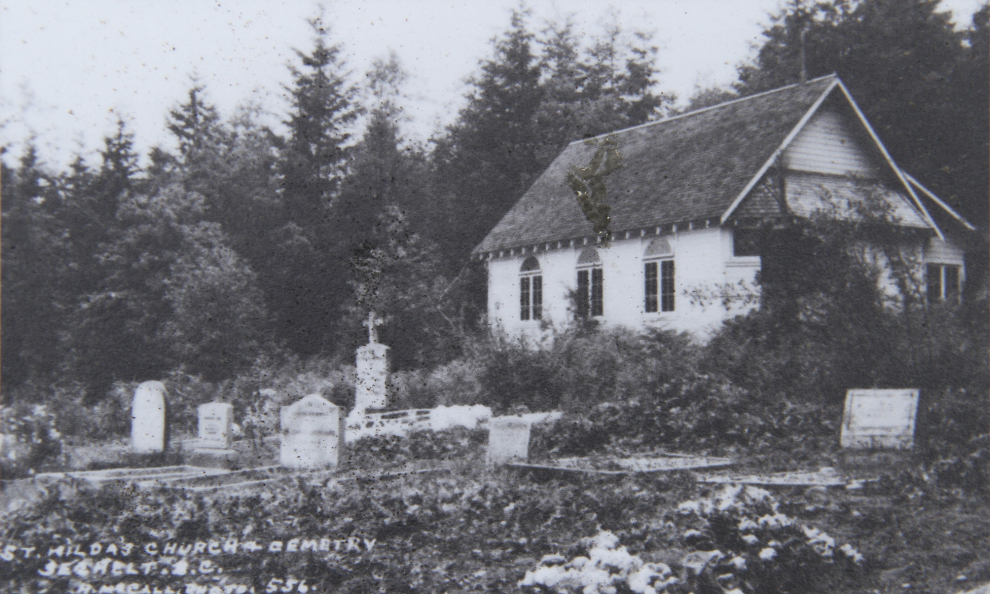
“Saint Hilda’s Pioneer Cemetery and Memorial Garden. Est. 1923.”

A general view of the cemetery.
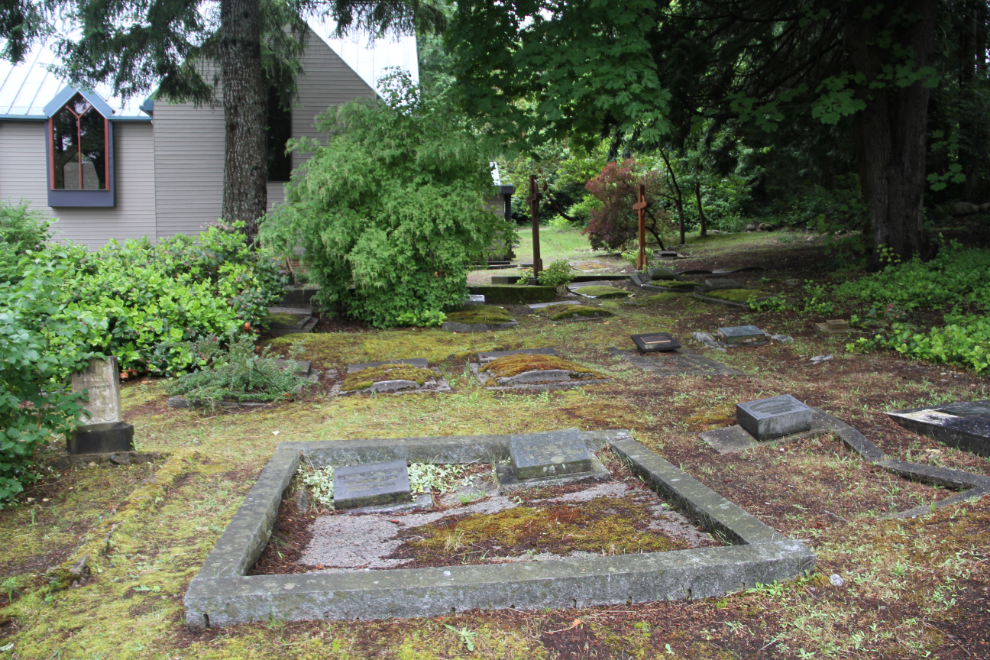
Four-month-old Regnheld Evelyn Davidson was the first burial at Saint Hilda’s, on January 15, 1923. A baby’s death would have made it a particularly sad start.
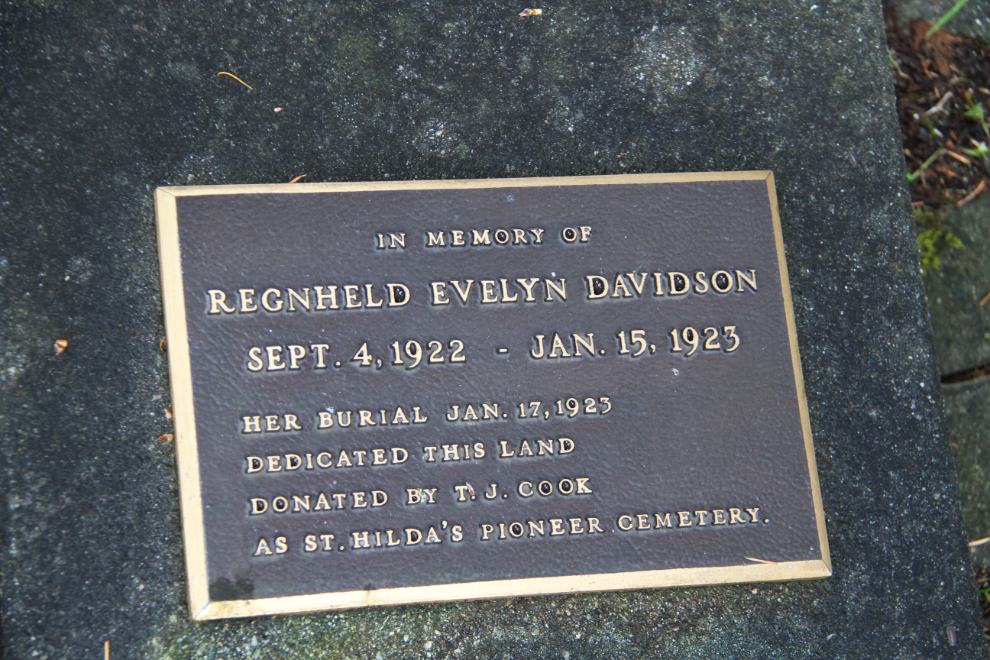
This is probably the oldest marker in the cemetery, but it isn’t identified.
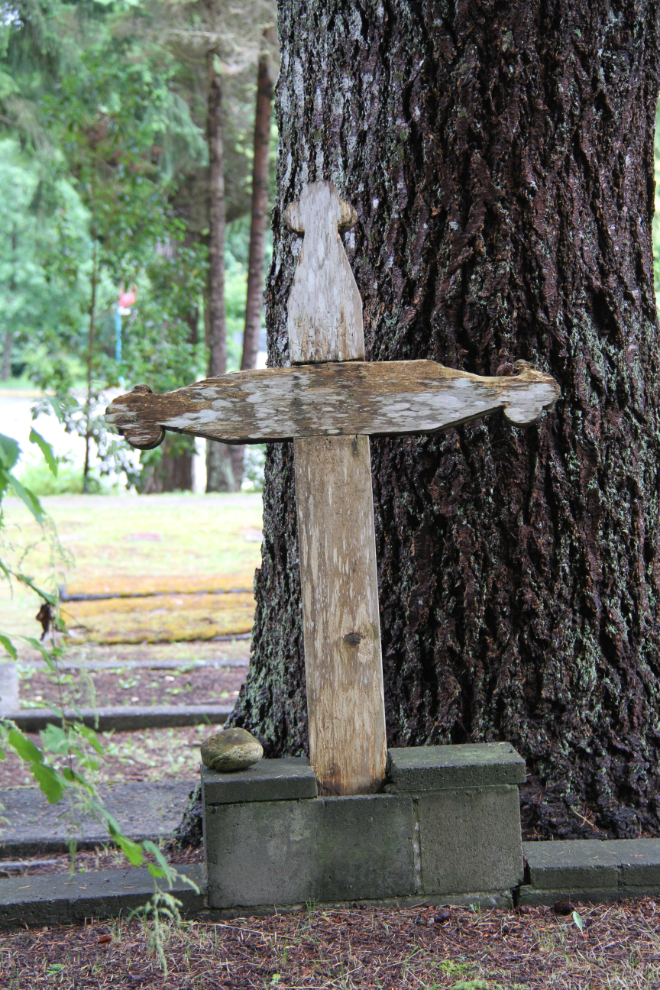
Going around to the front of Saint Hilda’s, I was surprised to find a meditation labyrinth. Labyrinths have been in use for about 5,000 years – this 11-circuit labyrinth is the same type as seen on the floor of the nave at Chartres Cathedral in France, which dates to the early 13th Century. A brochure at the labyrinth explains: “The medieval design made one path as long as possible, starting at the outer circumference and leading to the centre. Fraught with twists and turns, the path’s meanderings were considered symbolic representations of one’s own journey through life.” I’m always pleased to come across labyrinths. I saw a couple of them in Europe, but I’ve now also found them in a fairly remote location in the Yukon and in a residential-area park in Grande Cache, Alberta.
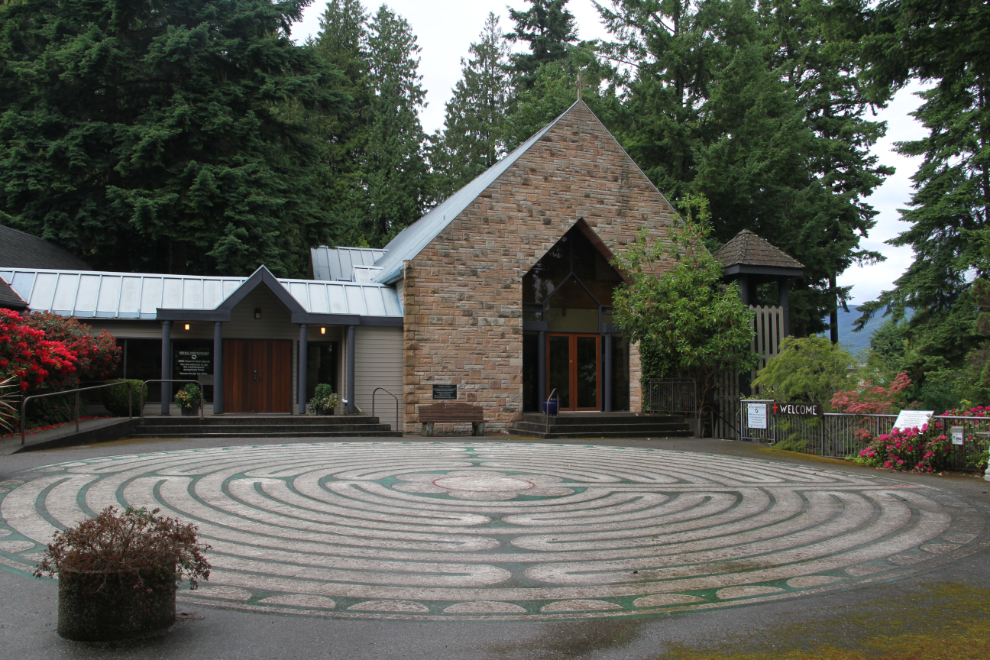
By starting here and walking slowly along the path while clearing your mind, spending time in the labyrinth can help de-clutter your world. Having two dogs waiting for me in the car made it impossible for me to focus on this one, but I really like what its presence says about the community.
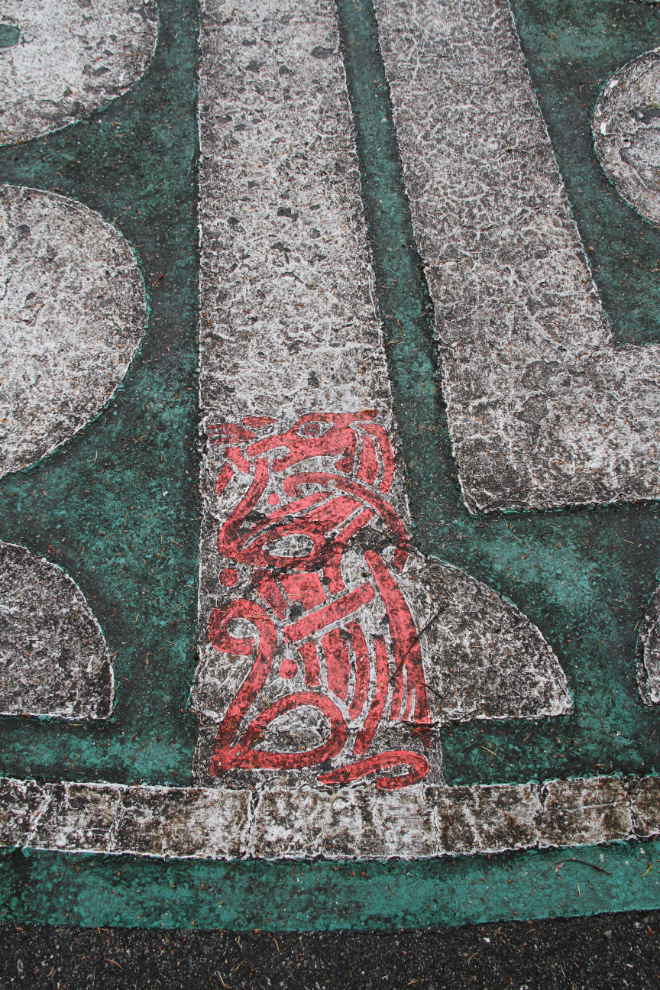
By now it was 5:30, time to get back to the motorhome and feed the kids. Although was not finished exploring Sechelt, the weather forecast was for more dreary weather, so I decided to leave the coast the next day. For much of what remained to be seen in the area, I’d rather have Cathy with me, and we will be back.